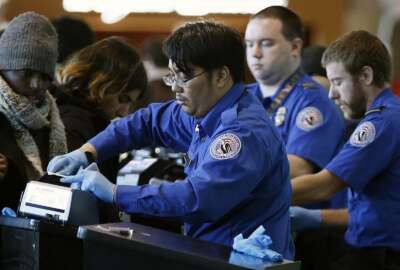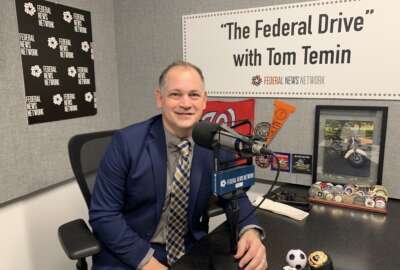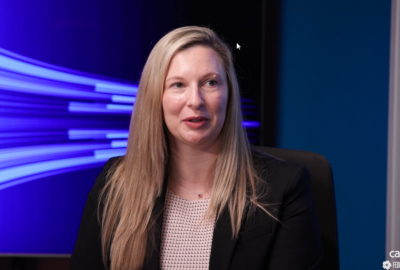How the TSA could improve the sense of job engagement of its line officers
Engagement scores for Transportation Security Officers have ranked below the average for federal employees. Its taken steps to help foster engagement.
Engagement scores for Transportation Security Officers have consistently ranked below the average for federal employees. Management at the Transportation Security Administration is aware of this. Its taken steps to help foster engagement. But the Government Accountability Office finds, TSA could do more. The Federal Drive with Tom Temin got more now from the GAO’s director of homeland security and justice, Tina Won Sherman.
Interview Transcript:
Tom Temin And this is not a case of total neglect of employee engagement. I mean, there’s union representation. The agency went in all for that. So it’s not like they have terrible management worker relations that they’re ignoring.
Tina Won Sherman An agency over the past few years has really taken steps to help address issues related to low employee engagement. And we did identify that. But some more work needs to be done. Employee engagement is defined as an employee’s sense of purpose in their job, and it’s one of the measures of morale. The reason why it’s important is because employee who has higher engagement tends to be more innovative, more productive, more committed to their job and less likely to leave. So that is something that TSA again, has been focused on, especially over the past few years.
Tom Temin And probably TSA realizes, and you probably discover it in this type of work, that the work of the TSOs, the officers right on that front line, requires a lot more discretion and human relations, perhaps, than people realize. They can make the difference between a terrific experience and therefore a great reputation for the agency. And near disaster when things are busy.
Tina Won Sherman I’m so glad you brought that up, Tom. I think it’s important to acknowledge it can be an incredibly challenging job that these individuals, these security officers are carrying out at airport checkpoints. Not only have they at all hours, continue to carry out their responsibilities, but also through the pandemic, they have had to come in every single day to carry out their critical security functions. And then the past few years, passenger volumes have been increasing at a steady rate. In fact, last year in 2023, passenger volumes had shattered records over two and a half a million at times per day of individuals that needed to be screened. And yesterday, the TSA administrator came out and said even for the first part of 2024, compared to last year, it’s already increasing at a rate of 6%. So these are dedicated individuals that in a very pressure filled, public facing, challenging job.
Tom Temin And TSA management, you point out, have done some things to recognize that good performance listening to people. But it seems like in the area of communication from management that that’s where they need to do some more work.
Tina Won Sherman Yeah, that’s that’s one of the the five drivers that we identified as part of our most recent review. So what we had done was we had taken a look at, the data from, recent federal employee survey. It’s one that’s conducted annually. And TSA from that survey has known about their lower employee engagement scores as a result. What we did, we analyzed the data from that survey and identified five key drivers contributing to these low engagement scores, and one of which is communication with management. So, for example, kind of on that particular issue, yes, TSA actually heard their employees, the transportation security officers concerns around getting information in a timely fashion to be able to make sure that they are being communicated to not only for kind of time sensitive issues, but also town halls and kind of broader communications, and even went as far as developed and implemented a mobile app to help with that reach across the workforce. But one of the things that we found was, on a daily basis, really, just more than 1% of those transportation security officers are accessing that mobile app on a daily basis. And so it’s not having the desired or intended effect the TSA was hoping for.
Tom Temin And do some of the measures that you are recommending require work in collective bargaining, or are these things that the TSA management could simply do to improve things without having to deal with the TSOs as a union set of employees?
Tina Won Sherman Yeah, TSA has been working kind of on a separate path focus on increasing, collective bargaining rights. Largely what we identified as a function of these five key drivers is within TSA, is ability to be able to address. So you had mentioned a little while ago, I’m talking about recognizing performance. So one of the other key drivers, in addition to communicating with management is managing and recognizing performance. So TSA took steps to be able to better recognize transportation security officers through a couple of programs, work to implement that, but ultimately stopped the implementation of those programs. And then the other piece of it that we had learned as part of our review was really kind of the managing piece. TSOs, these transportation security officers shared concerns around inconsistent performance reviews. Communication of feedback, and that is not something that TSA has had a chance to address yet. So we talk about that in our report.
Tom Temin We’re speaking with Tina Won Sherman. She’s director of homeland security and justice issues at the Government Accountability Office. And so your recommendations, I guess, would begin there on dealing with recognizing performance.
Tina Won Sherman That is one of the areas that we highlighted. In fact, we had nine recommendations and touched on all five of those key drivers that we identified in the report as part of those recommendations. In some cases, we asked TSA to go back and really better understand what the root cause or kind of the basic problem is with those key drivers, including another one is supporting work life balance. They had conducted some analysis, but we felt like they didn’t go far enough and really identify what the problem is. And it’s really hard to address an issue when you don’t understand that problem and be able to take action to resolve it. And some of the other recommendations that we felt those were causes were identified. We encouraged TSA to identify and take actions to help remedy those concerns in those drivers. And then we also made a couple of recommendations around some of the efforts that TSA has implemented over the past few years, kind of on a broader scale to help with employee engagement. One was around and employee engagement action plan or set of action plans and being able to work to better monitor those action plans that they have asked local airports to develop. And then also they work to implement a leadership survey where kind of a little bit of a 360. So employees are providing input to their supervisors. But what we found is, again, kind of the the lacking of monitoring that those survey results and feedback are actually being communicated. And there are conversations and individual level action plans being carried out to address.
Tom Temin Yeah, that’s kind of an issue with the entire federal employee viewpoint survey system has a lot of agencies, a lot of employees across the government, they always give agencies a low score on whether they’re going to do anything once they learn a result.
Tina Won Sherman It is challenging. Now, it’s important also to highlight that for our particular review, we actually focused on the 2022 employee survey that I had mentioned, that annual survey that had also kind of continue to trend, kind of with lower scores with employee engagement. But for 2023, which the results came out kind of very close to us completing our work, TSA did provide us with information from that survey, and they are trending in an upward direction, based on that particular survey. It’s still, again, kind of in the lower end within engagements across the government. But it was encouraging to see, a slight trend upwards.
Tom Temin One of the small issues. Well, I shouldn’t say small. One of the detail issues that affected work life balance perception early on in the TSA was that they had a deliberate policy. And this is kind of close to the post 9/11 era that they would change the shifts a lot. So no one had any regularity in their shift assignments. I think the thinking was, well, maybe you’d get to know a frequent flier that takes the same flight every week or every other day or something, and could collaborate with that person to get something on board. I don’t know what the thinking was, but it was a big sticking point is that pretty much in the past now? And do employees feel they have more regularity in when they’ll be going to work?
Tina Won Sherman Thinking about transportation security officers and their chefs, TSA recognized there are multiple challenges in terms of program time for employees when they should be coming in and when they might be taking leave and so forth. So the agency has started to migrate from the paper based system that they have of bidding for shifts to an electronic one to provide more efficiency, I think, provide more certainty in that process. But we still heard concerns from transportation security officers that we spoke with across the country. Actually, we sat down with 85 transportation security officers to get their perspectives, and what they communicated was that it still continues to be challenging to request and be granted leave. You typically need to do it quite a bit ahead, which if we kind of think about our own jobs, maybe not in that particular environment, even just a month ahead can be difficult. And they’re asked to do it months ahead. And then there are certain periods of time during the year, such as the summer, such significant passenger volume that they may be unable to take any of that leave at all.
Copyright © 2025 Federal News Network. All rights reserved. This website is not intended for users located within the European Economic Area.
Tom Temin is host of the Federal Drive and has been providing insight on federal technology and management issues for more than 30 years.
Follow @tteminWFED






